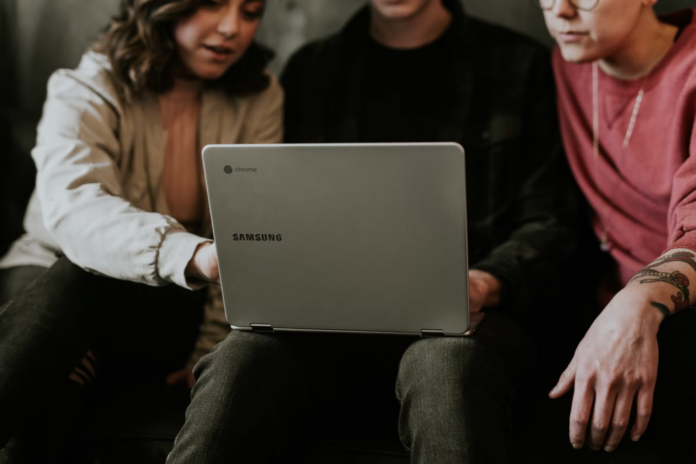Gone are the days when you had to have a Windows or macOS device to be truly productive. Now almost all basic tasks can be done in a browser without having to install any software or apps. The browser is the place to do everything.
A Chromebook is just right for someone who just wants to use a computer and do everyday tasks but isn’t going to do complicated jobs like video editing or graphics work. This is the kind of person who might be fine with a tablet, but “it’s just not comfortable to use”. You could say that a Chromebook is a mobile device that looks and acts like a laptop. It’s designed to stay connected at all times.
And, of course, it would be strange if the Chromebook didn’t have the ability to save images. Well, if you want to save images from the Internet or anywhere else on your Chromebook, here’s how you can do it.
How to save an image on a Chromebook
If you want to save an image on your Chromebook, you have to follow these steps:
- First of all, find the image you want to save to your Chromebook. For example, you can use Google Images to find a picture.
- Then, right-click on the image and choose “Save image as”.
- After that, you can change the image name and select a location where you want to store it.
- Next, click “Save”.
- Finally, a mini-preview of the image appears in the lower right corner of the screen with a confirmation message “Download Complete”.
Once you have completed these steps, you will save an image on your Chromebook.
What is ChromeOS
ChromeOS is a lightweight OS, which means it’s not as full-featured as Windows 10 or macOS. In fact, when ChromeOS was first released in 2011, it was very modest and you needed an Internet connection to use apps like Google Docs.
Since then, ChromeOS has evolved, so now, you can install apps, including Android apps, and use them without an internet connection, but it’s still more limited than Windows 10 and macOS. On the other hand, though, that’s one of the reasons why Google Chromebook is so appealing to many users.
As ChromeOS is a lightweight operating system, it doesn’t need powerful components to run, and it can use hardware that Windows 10 or macOS would perform very poorly on. This allows the Chromebook to be more affordable than other laptops.
How to use Google Photo for a cloud synchronization
If you need an easy way to easily download photos from your iPhone to your Chromebook, cloud syncing is the best way to go. Apple and Google have incredibly popular photo apps.
Apple doesn’t make its Photos app available for Android, so you really need to use Google’s solution to sync your photos to your Chromebook in the cloud using a third-party solution. If you simply install the Photos app on your iPhone and choose to sync your images in full quality, all of your photos will be available in the Photos app on your Chromebook. You can also access all your photos using the Google Photos web app.
What is the Chromebook backup and recovery
I think I’ve said two or three times now that one of the biggest advantages of a Chromebook is that everything is done in Chrome. That means you can swap your device without losing any files, photos, or anything else. Cloud backups create themselves. Again, it’s almost like a smartphone or tablet. It’s very simple and native.
When you swap your PC, just log in to your account and you’re done. Nothing else is required of you.
Is a Chromebook stable and safe
Unlike desktops or other laptops, Chrome OS is nowhere near as demanding on resources as the Chrome browser. Its appetite will be much lower and it will run very smoothly and smoothly. And unlike Windows, it won’t freeze as often due to a lack of resources when running multiple apps.
And the Chromebook also has the ability to run Android apps, which means you can enjoy some of your favorite mobile apps without even having a smartphone nearby. It’s unlikely to be useful every day, but it can be very useful sometimes.
For people who worry about viruses, it’s worth saying that Chrome OS isn’t prone to the same problems that many people encounter with Windows laptops. As a result, you’ll be safer and you won’t need anti-virus software, which, by the way, slows down the system even more.





[…] How to save images on a Chromebook […]